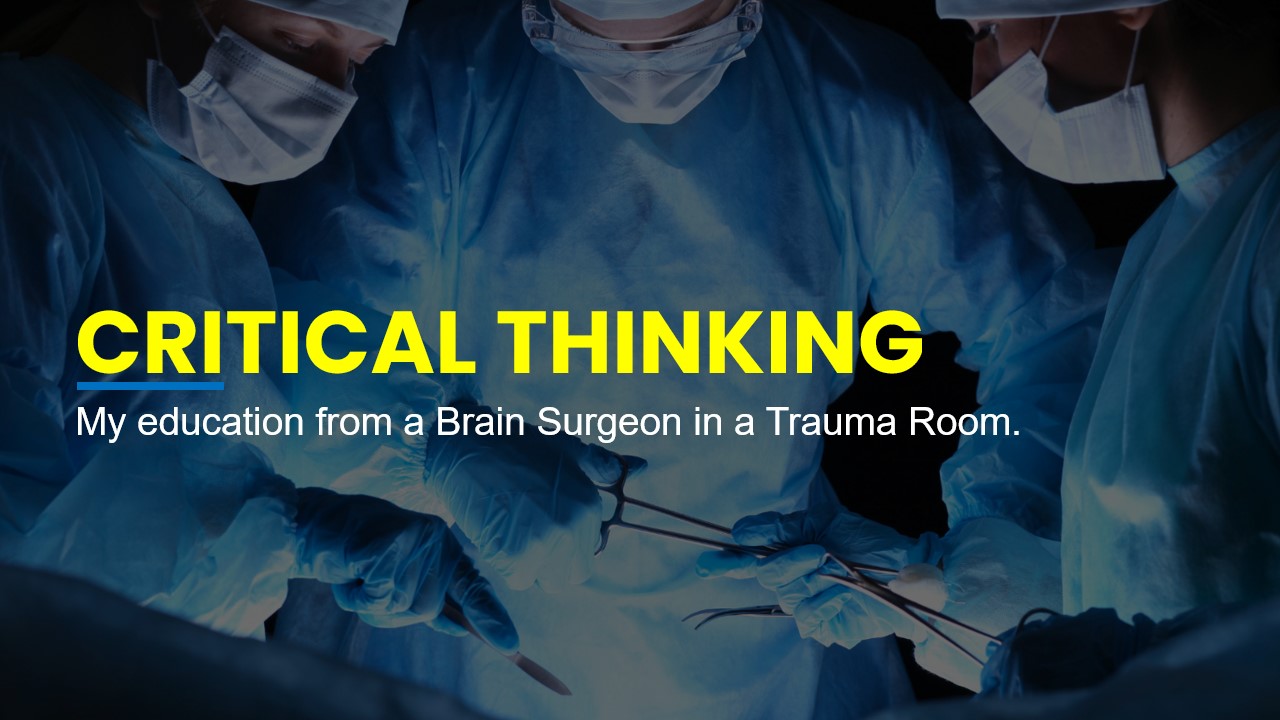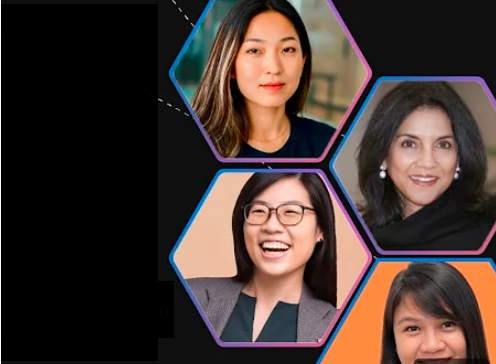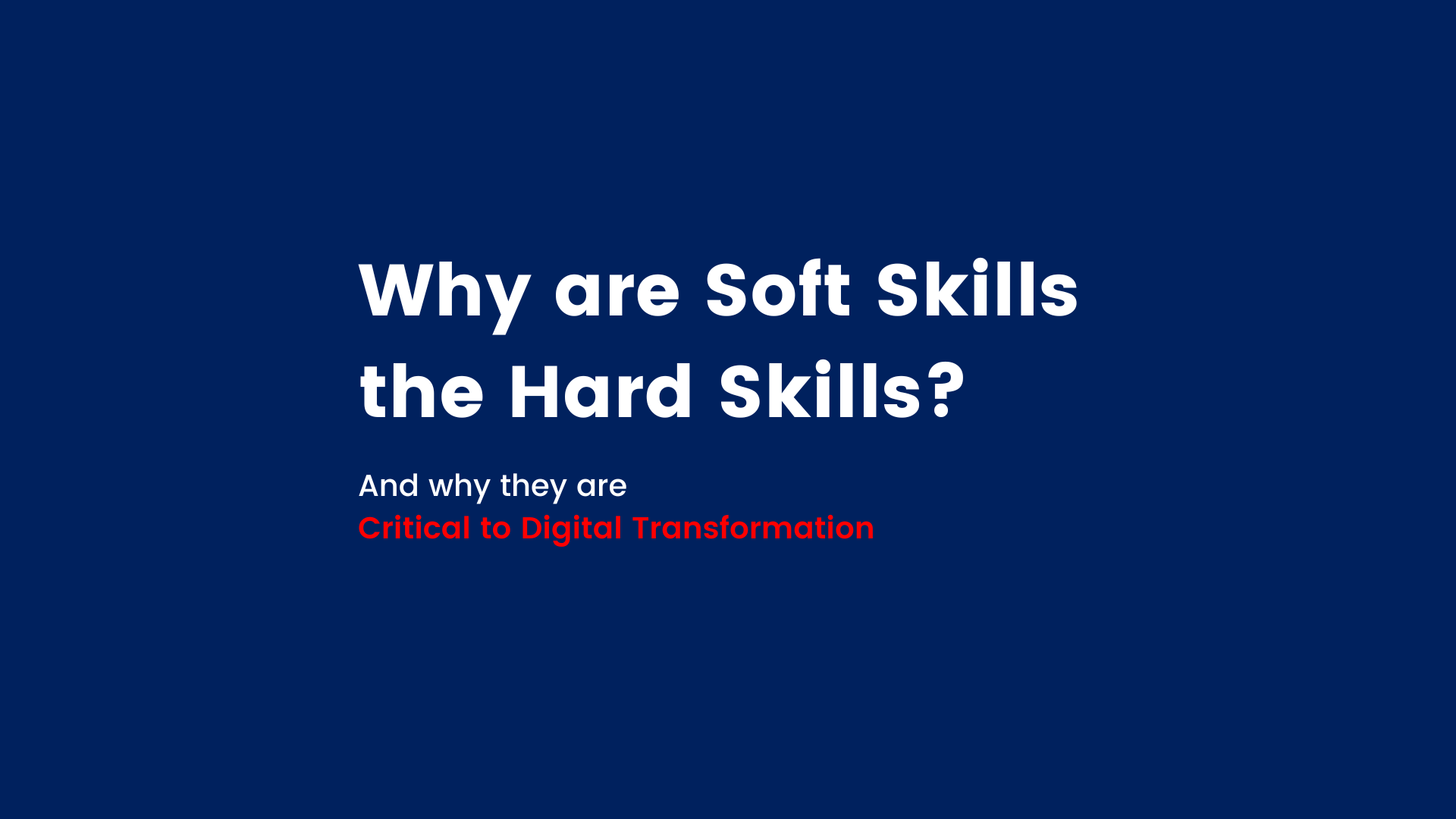
My education on the importance of slowing down to Think Critically was decades ago in a Trauma Room in Ben Taub Hospital, Houston, Texas. I was a photojournalist assigned a photo essay on emergency medicine. Ben Taub is one of the world’s leading trauma centers and at the time the hospital with the most cases of gunshot wounds in the US, to the degree that the US military would send Physicians there for experience. I was given extraordinary access & could photograph whatever I wanted.
It was an eye-opening assignment, seeing trauma teams descend on incoming patients, quickly cutting off their clothes, stabilizing them and removing bullets, but it was the brain surgeon that was my real education.
A patient had arrived with a severe head injury, and the team asked that the Neurosurgeon attend. When he arrived, he talked to the team, examined the patient and then went to a corner and just stood quietly.
It took me a while to understand that he was thinking, and he didn’t do it quickly; he stood still for quite some time, appearing to be doing nothing as the team continued to work.
Finally, he'd made up his mind, returned to the operating table and instructed the team on next moves.
I have never forgotten this. It was a master class in Daniel Kahneman's distinction between Thinking Fast (Intuitive) & Thinking Slow (Consciously Deliberate) and its link to Critical Thinking. Of course, emergency medicine also needs lots of System 1 intuitive action-oriented thinking & the need for physicians to have the self-awareness to decide on which route is a vital part of their training.
I’m writing this because in the world of AI led change these inter-related behaviors of self-awareness, ability to slow down and think or act with urgency are important across all functions, from software engineers to accountants, from sales & customer roles to new managers.
Most of the corporate world agrees but the conundrum for most organizations is how?
How do I train my team in these inter-related human skills not only effectively but at scale?
It can be done as our clients at HARDSKILLS can attest. Just as with a surgeon’s training, it needs to be done over time with repetition & interactivity that challenges learners, so their long-term memories are engaged so learning sticks.
Most of the corporate learning industry ignores this & relies on content led initiatives such as two days of classroom training or access to content libraries which is why the Harvard Business Review describes most of the learning industry as “the transfer of quickly forgotten information”.
If you’d like to see data on how it’s possible to take 10,000+ engineers for e.g. and train them measurably & effectively in critical thinking & related skills of communication & collaboration etc. so they’re better able to both innovate and influence their customers, please let me know.
We’d love to show you and one of the ways we teach this is cinematic interactive engagement with a brain surgeon.

CRITICAL THINKING. My education from a Brain Surgeon in a Trauma Room.
My education on the importance of slowing down to Think Critically was decades ago in a Trauma Room in Ben Taub Hospital, Houston, Texas. I was a photojournalist assigned a photo essay on emergency medicine. Ben Taub is one of the world’s leading trauma centers and at the time the hospital with the most cases of gunshot wounds in the US, to the degree that the US military would send Physicians there for experience. I was given extraordinary access & could photograph whatever I wanted.
It was an eye-opening assignment, seeing trauma teams descend on incoming patients, quickly cutting off their clothes, stabilizing them and removing bullets, but it was the brain surgeon that was my real education.
A patient had arrived with a severe head injury, and the team asked that the Neurosurgeon attend. When he arrived, he talked to the team, examined the patient and then went to a corner and just stood quietly.
It took me a while to understand that he was thinking, and he didn’t do it quickly; he stood still for quite some time, appearing to be doing nothing as the team continued to work.
Finally, he'd made up his mind, returned to the operating table and instructed the team on next moves.
I have never forgotten this. It was a master class in Daniel Kahneman's distinction between Thinking Fast (Intuitive) & Thinking Slow (Consciously Deliberate) and its link to Critical Thinking. Of course, emergency medicine also needs lots of System 1 intuitive action-oriented thinking & the need for physicians to have the self-awareness to decide on which route is a vital part of their training.
I’m writing this because in the world of AI led change these inter-related behaviors of self-awareness, ability to slow down and think or act with urgency are important across all functions, from software engineers to accountants, from sales & customer roles to new managers.
Most of the corporate world agrees but the conundrum for most organizations is how?
How do I train my team in these inter-related human skills not only effectively but at scale?
It can be done as our clients at HARDSKILLS can attest. Just as with a surgeon’s training, it needs to be done over time with repetition & interactivity that challenges learners, so their long-term memories are engaged so learning sticks.
Most of the corporate learning industry ignores this & relies on content led initiatives such as two days of classroom training or access to content libraries which is why the Harvard Business Review describes most of the learning industry as “the transfer of quickly forgotten information”.
If you’d like to see data on how it’s possible to take 10,000+ engineers for e.g. and train them measurably & effectively in critical thinking & related skills of communication & collaboration etc. so they’re better able to both innovate and influence their customers, please let me know.
We’d love to show you and one of the ways we teach this is cinematic interactive engagement with a brain surgeon.





.png)


